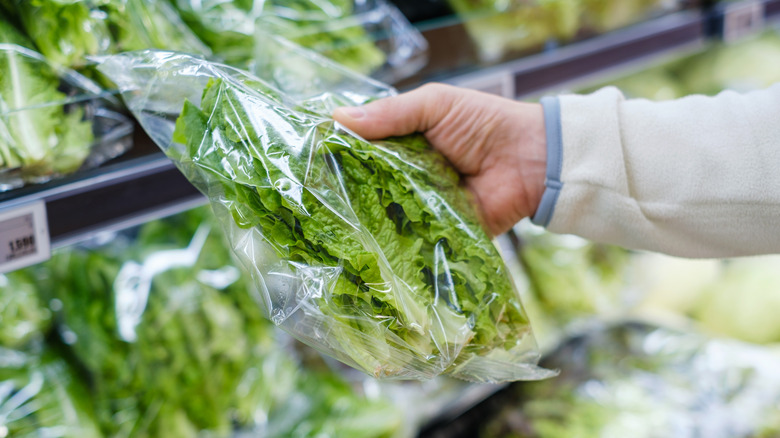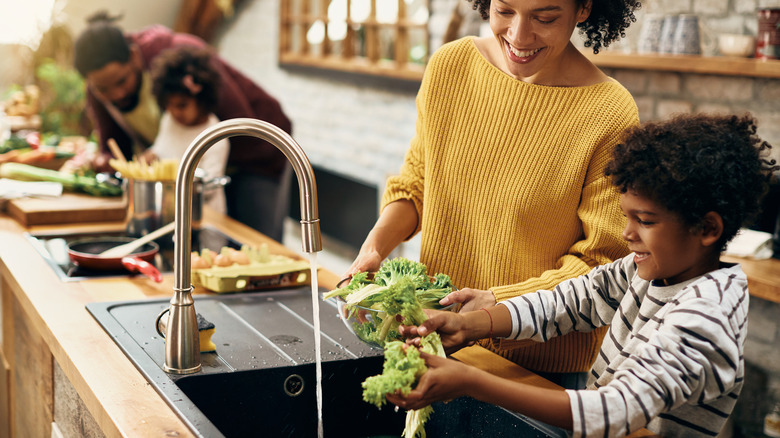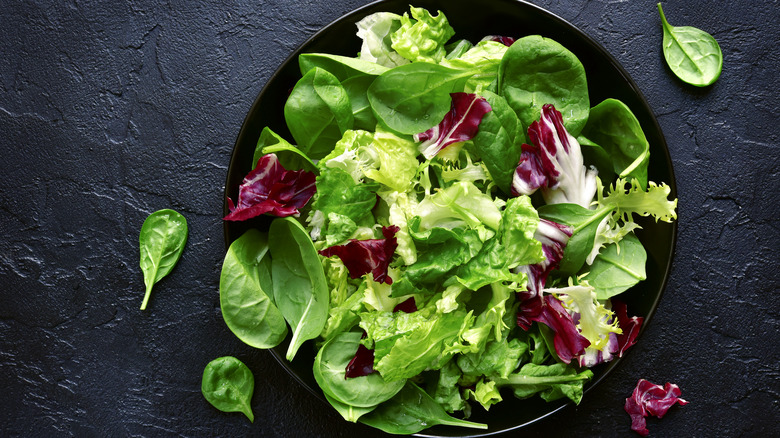You Should Actually Think Twice Before Washing Pre-Washed Lettuce
Although some advocate otherwise, you should actually think twice before washing a bag of lettuce marked "pre-washed," "triple-washed," or "ready-to-eat." It may seem like rinsing those greens is just part of doing your due diligence to avoid foodborne illness, but it could potentially do more harm than good.
Paradoxically, washing pre-washed lettuce could potentially introduce new sources of contamination you may have otherwise avoided. Neva Cochran is a dietitian and advisory panel member of the Leafy Greens Marketing Agreement. She told Eating Well, "Washing them again can increase the risk for leafy greens to pick up bacteria from your sink, countertops, cutting boards, knives, colanders, salad spinners, bowls, or other items or surfaces in your kitchen the greens might come in contact with during the washing process."
The regulatory agencies agree. The Centers for Disease Control and Prevention assures consumers that the industrial washing process carried out by the food manufacturing facilities is sufficient to remove bacteria. Plus, these facilities are all inspected by the Food and Drug Administration and held to its Good Manufacturing Practices, which looks at factors like sanitation and employees' personal hygiene.
What does triple washing entail?
When a bag of lettuce is labeled as "triple washed," it means that the lettuce has undergone three separate washing cycles during the processing and packaging stages. Each washing cycle typically involves rinsing the lettuce with water or a sanitizing solution. The first wash typically occurs at the farm itself, where the lettuce is initially rinsed to remove soil, debris, and insects. It then undergoes another wash at the facility with either chlorine or another sanitizer before one final cleanse.
That said, triple washing is not foolproof. The process doesn't sterilize the lettuce; it primarily aims to reduce the level of contaminants, not eliminate them entirely. According to Consumer Reports, triple washing produce removes up to 99% of bacteria that can cause foodborne illness, like E. coli. However, some surface pathogens can survive the process and risk making the consumer sick. Lettuce is very textured, and the bacteria can become lodged in its nooks and crannies.
The right way to wash lettuce
Although pre-washed lettuce is convenient and generally safe to eat straight from the bag, there are instances where washing it again at home might be advisable. One scenario is when you purchase organic lettuce or lettuce from local farmers' markets, where the washing process may not be as rigorous as that of commercially packaged lettuce. In such cases, washing the lettuce can help remove any lingering dirt, debris, or pesticide residues that may be present on the leaves.
If you notice any signs of spoilage or discoloration on the lettuce leaves or if the packaging is torn, it's probably a good idea to wash the greens before consuming. Washing can help revive wilted leaves and remove any contaminants that may contribute to the deterioration of the lettuce.
The CDC advises consumers to wash leafy greens by rinsing them under plain running water. Soaking the leaves can spread any contaminants that might be present. Additionally: "The FDA also advises against using commercial fruit and vegetable washes because they may leave residues," Neva Cochran explained to Eating Well. "Plus, their safety and effectiveness have not been thoroughly tested or standardized."


